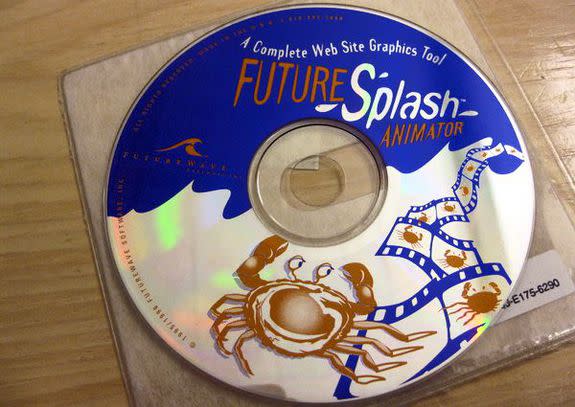Goodbye Flash and thanks for all the animated fish

I was there at the beginning of Flash and yet, when Flash dies in 2020, I won't miss it.
When I stumbled on the technology at the 1995 Internet World Conference in San Jose, it was called "Future Splash" and made by a tiny company called Futurewave Software, Inc.
Future Splash was designed for creating web-based animations that did not use GIFs, then the prevailing internet animation and web page building block technology.
SEE ALSO: Adobe is finally, finally, killing Flash
Back then, we needed Future Splash, which became Flash after Adobe purchased the technology. In the early days of the internet, there were only so many ways to add movement and video to the World Wide Web.
HTML, the skeleton of the web, has grown and changed over time and, for many faded into the background as simplified web publishing platforms like WordPress, Medium, and Tumblr have moved to the forefront. No one needs to know how to insert a "Bold" tag or build an HREF to handle a link. The web is automated and the underlying code is powerful enough that we probably don't need plugins like Flash anymore. (Clearly, Adobe doesn't believe we need them any more).
But that's not what killed Flash.
Back in 2010, when I wrote a possibly wrong-headed defense of Flash, I was reacting to what I saw as the late Steve Jobs' almost irrational distaste for the platform. Back then he reportedly — and accurately — called it buggy and blamed it for Mac crashes. It's no wonder Jobs wouldn't let his iOS support it.

Image: lance ulanoff
On the PC side, Flash was responsible for at least as many crashes (ads built on it still crash Google Chrome today). And as the internet grew and Flash use grew with it, the platform became a favorite target for hackers and malware authors. "New Flash Security Hole," was an all-too-common headline over the last 15 years.
But even as we struggled with Flash security and reliability, it was sliding into irrelevance.
Initially, it was the rise of HTML 5 that threatened Flash's dominance, especially in the video space. YouTube started supporting HTML 5 video in 2010 and then switched over completely in 2015.
That change wounded Flash, but it was mobile devices and our app-obsessed culture that struck the mortal blow.
At the start of 2010, there were still tens of thousands of apps (there are now over 2 million in the App Store), but there was no Snapchat or Instagram, which didn't arrive until later that year. Many people still used Twitter's web interface and Facebook's Mark Zuckerberg, like many others, was convinced, wrongly it turned out, that HTML 5 was the future of mobile apps.
By 2012, Zuckerberg would admit that betting on HTML 5 was a mistake.
We now spend most of our time in native, mobile social media apps and, sometimes, follow links from them to actual websites.
Even so, we probably spend more time consuming content and video on Facebook, Twitter, Instagram and Snapchat, which means we're not on traditional homepages viewing ads — ads that were traditionally built with Flash.
Advertisers who can no longer count on eyeballs driven by website and homepage visits have shifted focus to video as a host for pre-roll video ads.
Which means fewer and fewer people are building ads the old-fashioned way with Flash.
Obviously, when Flash finally dies in 2020, some legacy websites and services will break and some will scramble to adopt new ad-building tools, but they will be in the minority and, most likely, no one will notice or care anyway.
Hard as it is to accept, Flash is the modern equivalent of a Western Union telegram, once useful but now quaint, and slightly ridiculous. A relic that persisted long past the point of usefulness, buoyed largely by misplaced nostalgia that will, as it did with the telegram, fade to wistfulness once Flash is dead and buried.
Thanks for helping us build the internet, Flash. You will not be missed, but it's unlikely you'll ever be wholly forgotten.
WATCH: Filmmakers tried to use hilarious code words to keep 'The Avengers' under wraps


 Yahoo News
Yahoo News 